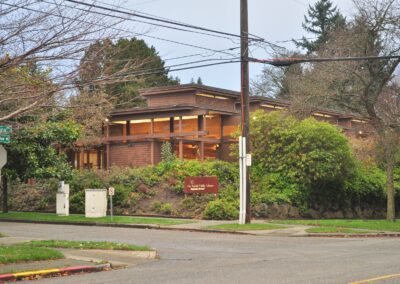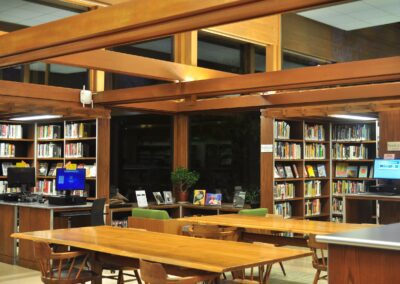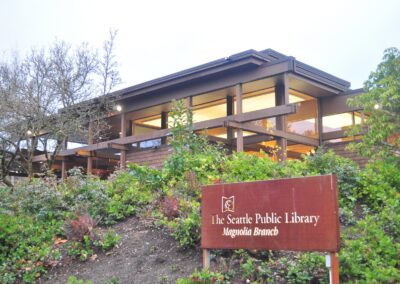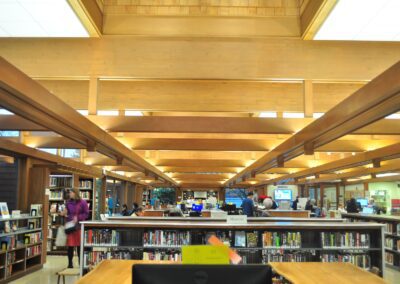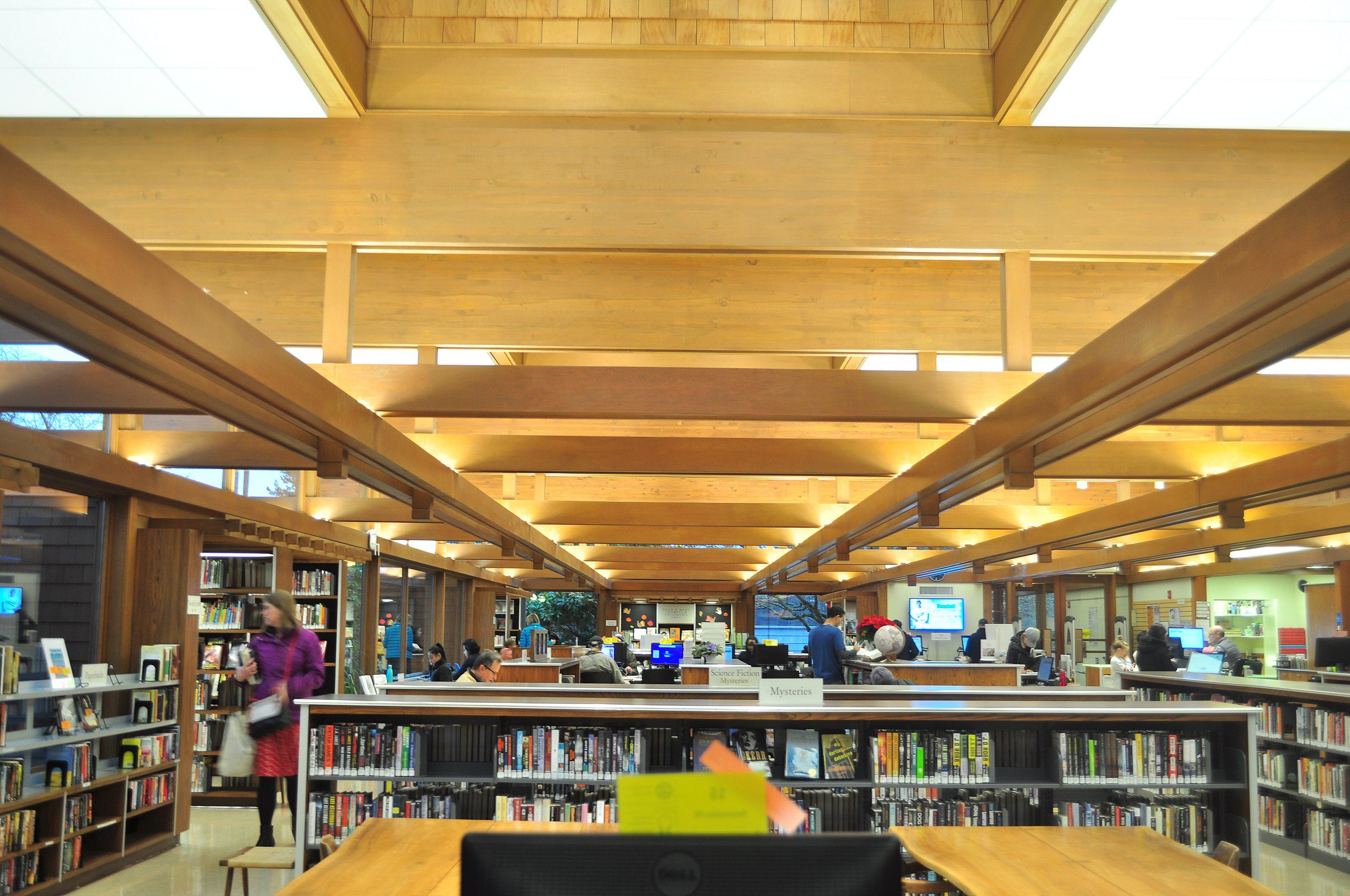
Magnolia Library
2801 34th Avenue West, Seattle, WA 98199
Built 1964
The content below is from the National Register of Historic Places 2015 nomination form by Susan Boyle and Mimi Sheridan.
The Magnolia Public Library is located in Magnolia, a neighborhood in northwest Seattle that developed largely in the post-World War II era. The building and site were designed by Seattle architect Paul Hayden Kirk and landscape architect Richard Haag. The property is an award-winning example of Northwest Modernism. The original 6,523 square foot, wood-clad, single story building is largely intact, although it was slightly expanded in 2008.
Both the original design and the recent addition integrate the landscape, architecture, and structure in a holistic interdisciplinary expression. The building remains an unusual and highly successful synthesis of traditional Japanese bypass structural techniques and Modern-era exposed wood and timber framing, with open interior volumes, amply lit by natural daylight from an abundance of windows and clerestories.
History
The Magnolia Library was constructed in 1964 as part of an expansion program by the Seattle Public Library System that produced a new central library in the downtown and six new branch libraries, which replaced or augmented its earlier Carnegie-era facilities. This program and its resulting buildings reflected the growth of the city, and its cultural identity as a major late 20th century metropolis. The library, built in a residential neighborhood that developed largely in the post-war era of the 1950s and 1960s, reflects this cultural context. The Magnolia Library underscores the enduring principles of the public library as an American institution promoting self-taught knowledge and civic engagement.
The Architect, Paul Hayden Kirk (1914 – 1995)
Paul Kirk was born in Salt Lake City, Utah, on November 18, 1914, moving to Seattle in 1922 with his family. After graduating from the University of Washington with an architectural degree in 1937, Kirk worked under various Seattle architects before opening his own practice, Kirk, Wallace, McKinley and Associates in 1939.
Magnolia Library has been cited by many as “a quintessential Paul Kirk building.” The bypass beam-work’s complex detailing enforces the legibility of the exposed structure, and Kirk’s conscientious siting of the building and use of indigenous building and plant materials indicates an understanding of Modernism that surpassed rote methods.
Landscape Architect, Richard Haag (1923-2018)
Richard Haag was selected as the landscape architect. Born in Louisville, Kentucky in 1923, Rich Haag received an undergraduate degree in landscape architecture from the University of California, Berkeley. He continued his studies at Harvard, where he received his Masters in Landscape Architecture in 1951. After graduating, Haag accepted a traveling fellowship to Kyoto University in Japan, returning to US to work with renowned landscape architect Lawrence Halprin in San Francisco in 1956. Haag then moved to Seattle in 1958. At the time of his commission for the Magnolia Library, Haag was a associate professor at the University of Washington‘s College of Architecture’s Landscape Architecture Department.
Haag’s design for the landscape surrounding the Magnolia Library called upon his knowledge of architecture, light and native plant materials, which resulted in an integrated site and building design. He also expressed a respect for natural materials, Japanese aesthetic influences, and indigenous forms.
The Building and Site
According to Kirk, the design for the Magnolia Library was influenced significantly by its site, which was a heavily wooded vacant lot in a residential area.
Two small gardens, separated by a wood-shingled partial-height wall, are located along the north end of the building. Native plants such as blueberries, cranberries, periwinkle, vine maple, silver lace vine, and vine maple were planted along the main entryway and walkways.
The Magnolia Library is notable for its wood frame structure. Its structure consists of a reinforced concrete slab with concrete foundations and walls in the small, partial basement at the northwest corner, and a complex wood post and beam arrangement in “bypass” system that supports the roof. On the perimeter, large panels of glazing and wood-framed walls infill the areas between posts. The framed wall areas are typically clad with shingles, both at the exterior and in some areas of the interior. The flat roof varies in height between the staff core area and the public spaces to clearly distinguish them in a hierarchical massing. Four monitors with clerestory glazing break the ceiling plane, and rise above the adjacent upper roof levels.
The 2008 remodel is consistent with its original design. It follows Kirk’s vision, thus conveying Northwest Modernism’s architectural principles.
